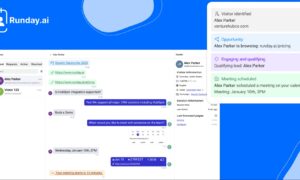Multiprotocol label switching has been a foundational technology for more than 25 years and is an extremely dependable, premium-grade, IP-connected bandwidth solution that can assist mid-size to enterprise businesses in developing private networks.It is anticipated that the technology will continue to gain popularity.)
Data packets in standard IP routing only contain the IP address of the target or destination from which they are being sent.As a result, a forwarding decision based on the packet’s network-layer header must be made by each router along the path of a particular packet.
As each router processes the destination and matches the best route for the packet from its perspective by referencing an often large and overbearing in-memory route table, the sum of all the individual routing decisions can degrade performance.Latency-sensitive applications like real-time video and voice can suffer greatly from this.
What does MPLS entail?
Instead of relying solely on the addresses of the final source and destination, MPLS network for international businesses by making use of the idea of “labels” that have already been predetermined.A short bit sequence, known as a forwarding equivalence class (FEC) or class of service (CoS), is added to the packet to accomplish this.These labels can be derived with insight and indicate the kind of traffic they carry.
Why are you interested?
The goal of MPLS is to improve the quality of communications.It makes it possible to quickly and easily separate different kinds of traffic so that applications and packets that need higher performance metrics because of the data’s inherent nature can get better and faster routing decisions.As a result, the highest perceived quality can be guaranteed for applications like voice and video that require a low-latency path.
MPLS routers at the network’s edge and core can access a label-switched path, or LSP, to route traffic solely based on the FEC’s criteria thanks to this traffic segregation and classification.This greatly enhances the thoughtfulness and efficiency of table lookup and routing.
Each packet can have information added by users that controls how it is handled.For instance, the technology could be used to map those labels to low-latency paths by a company that wants its communications platform to perform better.On the other hand, businesses could make use of it to stop certain kinds of communication traffic, like YouTube, from using up valuable bandwidth.
The Numerous Advantages of MPLS for
Your Company MPLS offers the following advantages:better end-user perceptibility, improved performance, less network congestion, higher quality, better bandwidth management and resource utilization, and scalability
MPLS has established itself as a means of connecting corporate point-to-point locations where IP traffic between retail stores, warehouses, regional offices, data centers, and other locations is crucial to the perception of end users and to the success of the company as a whole.
Keep in mind that there are drawbacks as well: these private-like connection types and their guaranteed performance SLAs can be more expensive and necessitate some additional technical and management complexity in order to achieve optimal performance across a variety of topology models and architectures of networks.
SD-WAN (Software Defined Wide Area Networking) and MPLS The need to achieve MPLS-like performance at a more affordable price point sparked the development of SD-WAN, or SD-WAN for short.SD-WAN offers various advantages that would be useful, even down-market to the little and miniature business sections:
SD-WAN moves next-generation routing intelligence and decision-making capabilities to the customer premises, achieving high resiliency, high diversity, low latency, increased security, multi-path capabilities, self-correcting and forward-correcting connectivity.A SD-WAN appliance can use each internet connection independently and concurrently to determine the best path for the data to travel when multiple internet connections are connected to it.
Based on the real-time performance metrics of each circuit and its custom-defined criteria, per-packet decision routing decides how to move those packets the best and most effectively.As a consequence of this, the behavior of these numerous circuits as a whole resembles that of premium MPLS-like circuits.
SD-WAN and MPLS:Enter MPLS+ The next logical step in achieving the ideal balance between extreme connectivity and financial constraints is to combine a primary MPLS network with an SD-WAN.You save a lot of money while getting the best of both worlds options.
The SD-WAN supplement to a solitary MPLS arrangement gives an extra layer of ultra-overt repetitiveness, ultra-strength, and ultra-variety to a generally exceptional plan.Additionally, the SD-WAN component of the overall MPLS+ solution is able to exponentially increase its resilience, redundancy, diversity, and efficacy with each additional independent internet circuit added to the appliance.
Need a Closer Look?
Adding MPLS, SD-WAN, or both to your wish list if you’re in the market for a new enterprise business communications system could be a smart move.



































